Yellowstone Park - very long, many pictures
Posted: Fri Jul 08, 2011 12:45 pm
About a year ago, my Wife and I drove up to Montana for her dad's funeral. We drove up through Texas and cut across the corner of Paradise (otherwise known as New Mexico) and continued up Interstate Highway 25 through Denver, Casper, and Billings. From Billings, we took Interstate 90 to Bozeman, my Wife's home town.
After the funeral, we decided we would go home by crossing through Yellowstone National Park. We have strong memories of the Park, since we both spent a lot of time there in our youth and also took our kids there many times when they were young. A trip through the Park would have lots of memories.
We crossed through the Park from West Yellowstone, past Old Faithful, around the west and north shores of Lake Yellowstone, and then out the East Entrance to Cody, Wyoming. We went on to Thermopolis and then rejoined Interstate 25 for the trip back home.
So, the pictures start after leaving Gallatin Gateway and heading down the Gallatin River toward West Yellowstone:
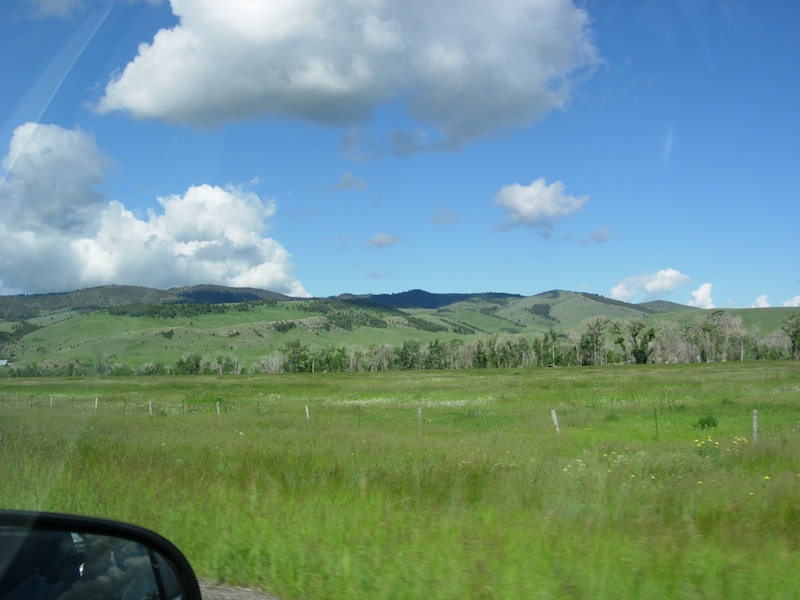
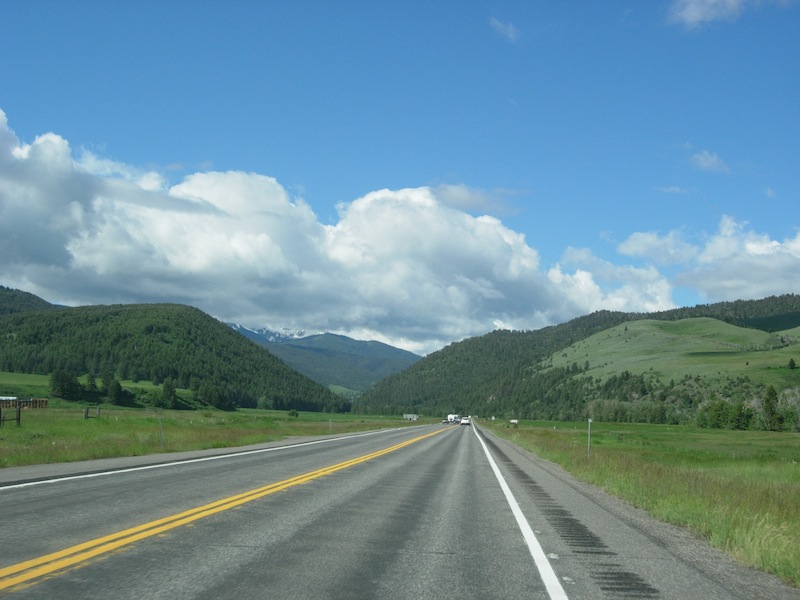
Above: entering the mountains southwest of Bozeman
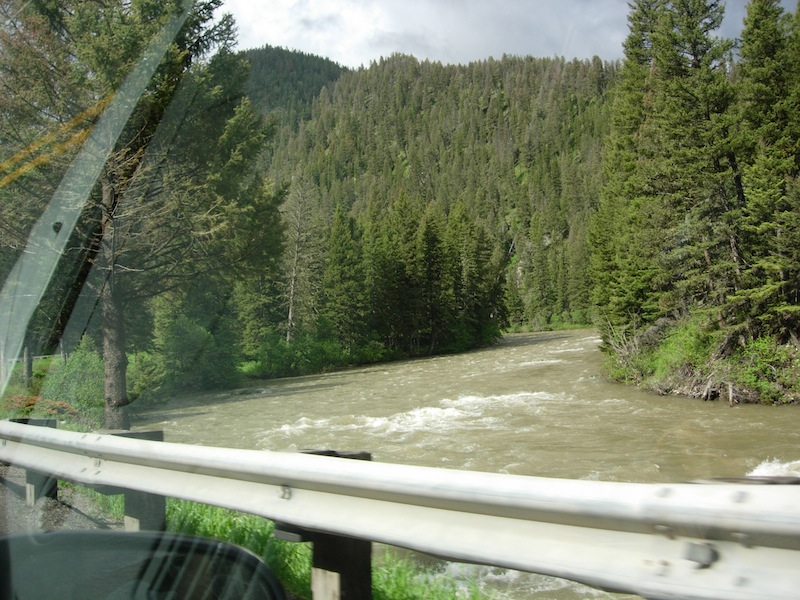
The Gallatin River was running very high, so it is quite murky as well -- not a good time to be fishing!
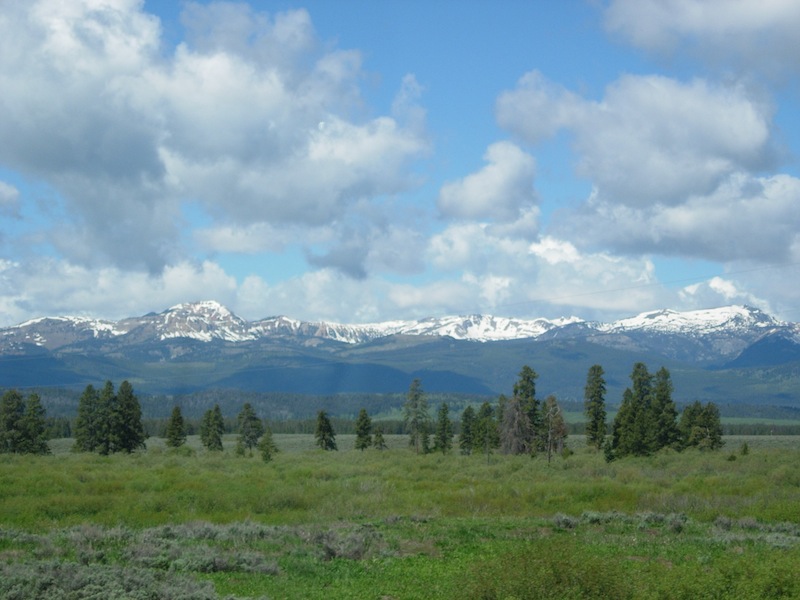
Looking west, toward the Spanish Peaks
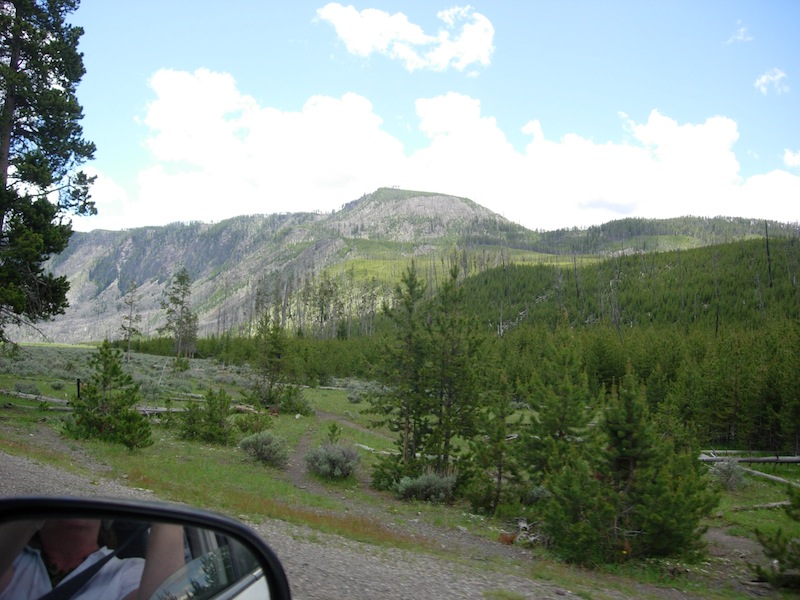
-- Fri Jul 08, 2011 1:15 --
This is inside the Park, having passed through West Yellowstone and the Park entrance. This is along the Madison River Valley. (You will want to recall that Lewis & Clark, having come to the headwaters of the Missouri River in present-day Three Forks, Montana, named the rivers, from east to west, for Albert Gallatin, Secretary of the Interior, James Madison, Secretary of State, and Thomas Jefferson, President.) The Gallatin flows along the Park's western boundary, while the Madison takes off to the northwest.

The Madison is world-famous as a blue-ribbon trout stream, and here, you can see why.
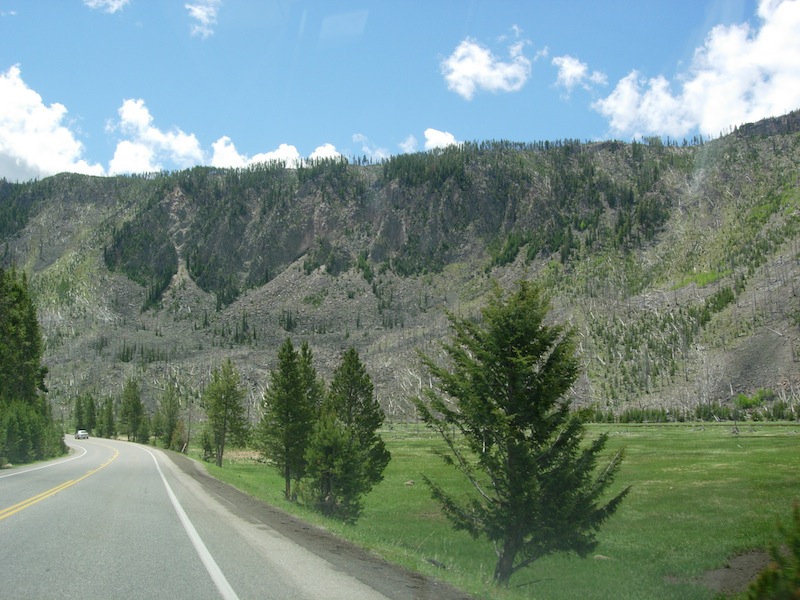
Going further east in the Madison Valley, you can see a lot of barren patches on the hills. There was a tremendous forest fire in the Park in 1988. All of the businessmen in the area, normally people who decry anything the Federal Government does, squawked to high heaven for the Government to put out the fires. But other than a few areas where historical buildings were threatened, like the famous Inn at Old Faithful, the fires were allowed to burn. At the time, many people said that the Park would never be the same, and of course, it won't be. But here, 23 years later, you can see how the land has recovered quickly. Also, the fish population in Lake Yellowstone boomed, because the fire allowed nutrients to wash into the Lake, which revived the food chain. Fire is also nature's way of balancing the grasslands and the forest, as grasses will normally survive fires, while trees are pushed back. Lodgepole Pines (so termed because Native Americans used them for tepee poles) need fire for their cones to open and germinate, so fire is part of their life cycle. In the end, it does seem that Nature knows better than businesses which are only worried about the tourist season profit. While profit is necessary, sometimes a longer-term plan is more important than short-term gain, and sometimes scientists actually do know what they are talking about!
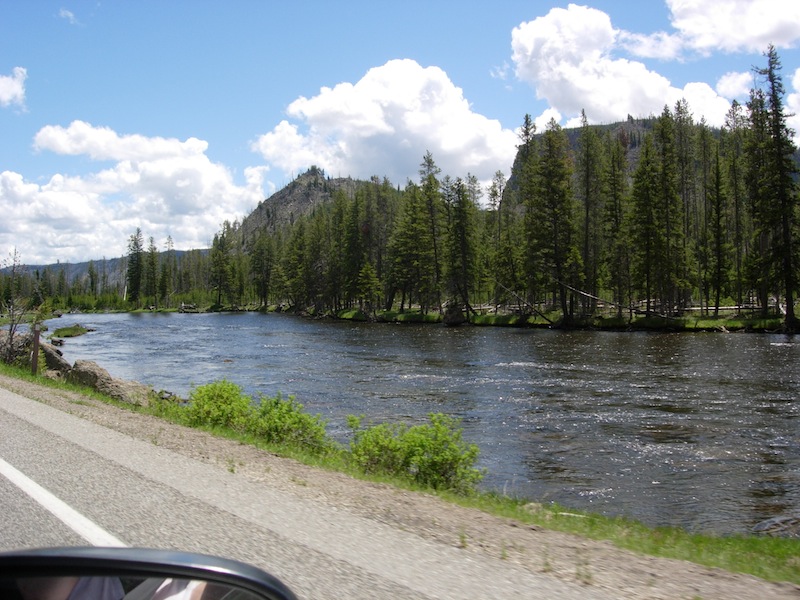
Another view of the Madison River. My Dad fished all along here many times when I was a little kid.
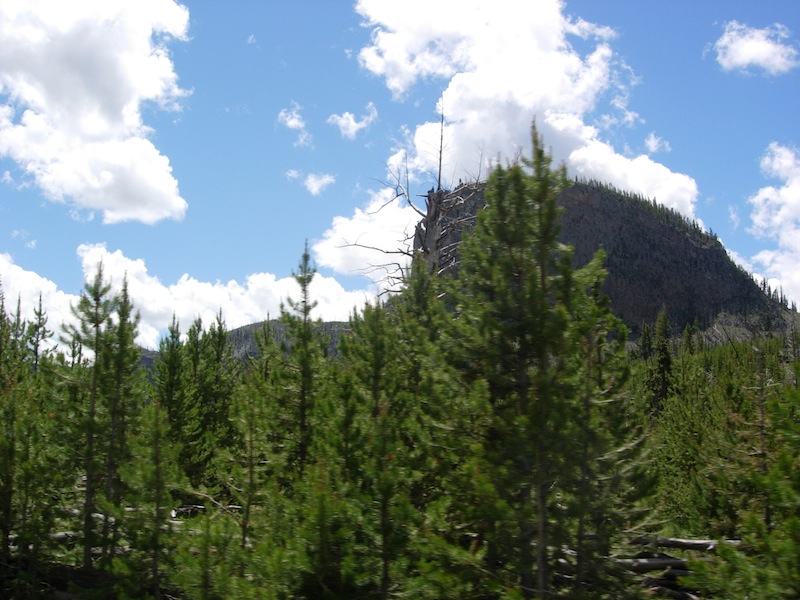
This is all new-growth Lodgepole Pine. you can see how the peak in the background has been burned off, but dead standing still remains.
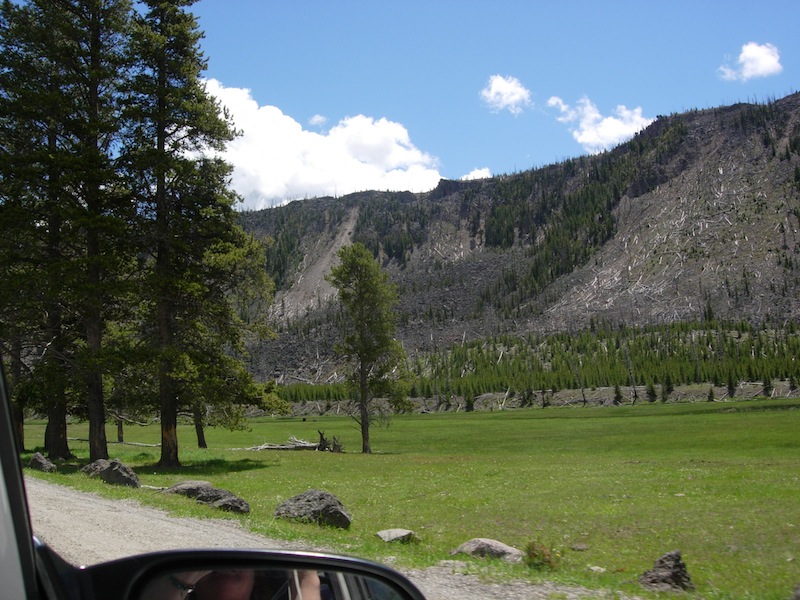
The winters at this altitude are quite harsh, and this luxuriant growth of grass is the main source of food for buffalo, elk, and a lot of the little critters.
After the funeral, we decided we would go home by crossing through Yellowstone National Park. We have strong memories of the Park, since we both spent a lot of time there in our youth and also took our kids there many times when they were young. A trip through the Park would have lots of memories.
We crossed through the Park from West Yellowstone, past Old Faithful, around the west and north shores of Lake Yellowstone, and then out the East Entrance to Cody, Wyoming. We went on to Thermopolis and then rejoined Interstate 25 for the trip back home.
So, the pictures start after leaving Gallatin Gateway and heading down the Gallatin River toward West Yellowstone:
Above: entering the mountains southwest of Bozeman
The Gallatin River was running very high, so it is quite murky as well -- not a good time to be fishing!
Looking west, toward the Spanish Peaks
-- Fri Jul 08, 2011 1:15 --
This is inside the Park, having passed through West Yellowstone and the Park entrance. This is along the Madison River Valley. (You will want to recall that Lewis & Clark, having come to the headwaters of the Missouri River in present-day Three Forks, Montana, named the rivers, from east to west, for Albert Gallatin, Secretary of the Interior, James Madison, Secretary of State, and Thomas Jefferson, President.) The Gallatin flows along the Park's western boundary, while the Madison takes off to the northwest.
The Madison is world-famous as a blue-ribbon trout stream, and here, you can see why.
Going further east in the Madison Valley, you can see a lot of barren patches on the hills. There was a tremendous forest fire in the Park in 1988. All of the businessmen in the area, normally people who decry anything the Federal Government does, squawked to high heaven for the Government to put out the fires. But other than a few areas where historical buildings were threatened, like the famous Inn at Old Faithful, the fires were allowed to burn. At the time, many people said that the Park would never be the same, and of course, it won't be. But here, 23 years later, you can see how the land has recovered quickly. Also, the fish population in Lake Yellowstone boomed, because the fire allowed nutrients to wash into the Lake, which revived the food chain. Fire is also nature's way of balancing the grasslands and the forest, as grasses will normally survive fires, while trees are pushed back. Lodgepole Pines (so termed because Native Americans used them for tepee poles) need fire for their cones to open and germinate, so fire is part of their life cycle. In the end, it does seem that Nature knows better than businesses which are only worried about the tourist season profit. While profit is necessary, sometimes a longer-term plan is more important than short-term gain, and sometimes scientists actually do know what they are talking about!
Another view of the Madison River. My Dad fished all along here many times when I was a little kid.
This is all new-growth Lodgepole Pine. you can see how the peak in the background has been burned off, but dead standing still remains.
The winters at this altitude are quite harsh, and this luxuriant growth of grass is the main source of food for buffalo, elk, and a lot of the little critters.